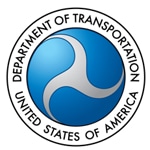Dollar value of goods moved on the transportation network greater than ever before

“A transportation network that can support the freight needs of this country is essential to a healthy economy,” U.S. Transportation Secretary Anthony Foxx said. “The need for infrastructure investment is growing more urgent every day.”
Secretary Foxx emphasized the importance of freight to the economy in the Department’s study of transportation trends, “Beyond Traffic”, conducted earlier this year. The study pointed to a 45 percent growth in freight in the United States by 2040.
The newly baselined Freight Analysis Framework estimates show that in 2012, nearly 17.0 billion tons of goods worth about $17.9 trillion were moved on the transportation network, which equates to 47 million tons of goods valued at more than $49 billion a day moved throughout the country on all transportation modes – compared to $45 billion per day in 2007. Trucks remain the most commonly used mode to move freight, transporting 64 percent of the weight and 71 percent of the value in 2012 – compared to 65 percent of the value in 2007.
“Once again the importance of highways to the economy is underscored even as the passage of a long-term reauthorization bill continues to be uncertain,” Federal Highway Administrator Gregory Nadeau said. “Efficient freight movement will be at the core of business success for decades to come.”
“BTS’ Transportation Services Index issued last week shows that freight on the nation’s transportation system has grown by almost a third since the low point during the recession in April 2009,” Bureau of Transportation Statistics Director Patricia Hu said. “Today’s release of the new Freight Analysis Framework, built on BTS’ Commodity Flow Survey, is the first in a series of tools that will help officials at all levels of government plan for continued freight growth.”
The “Freight Analysis Framework” includes data on the amount and types of goods that move by land, sea and air between large metropolitan areas, states and regions. It is designed to provide information on national level freight flows across the nation’s transportation network. This information helps the public and private sectors at all levels better understand freight movement; transportation planners use it to target resources to improve operations or increase capacity. Today’s product focuses on the origin and destination component of FAF. Additional elements are planned for future release.
More detail on the “Freight Analysis Framework” is available here.
The Department also continues to welcome feedback and comment on the draft National Freight Strategic Plan. Click here to submit your thoughts and to learn more about the draft plan.
 NEW ORLEANS – Federal Railroad Acting Administrator Sarah Feinberg and New Orleans Deputy Mayor and Chief Administrative Officer Andy Kopplin hosted the eighth of 11 nationwide regional forums on the Beyond Traffic draft framework at the New Orleans Regional Transit Authority Building. The Beyond Traffic report examines the trends and choices facing America’s transportation infrastructure over the next three decades, including a rapidly growing population, increasing freight volume, demographic shifts in rural and urban areas, and a transportation system facing more frequent extreme weather events. The report predicts increased gridlock nationwide unless changes are made in the near-term.
NEW ORLEANS – Federal Railroad Acting Administrator Sarah Feinberg and New Orleans Deputy Mayor and Chief Administrative Officer Andy Kopplin hosted the eighth of 11 nationwide regional forums on the Beyond Traffic draft framework at the New Orleans Regional Transit Authority Building. The Beyond Traffic report examines the trends and choices facing America’s transportation infrastructure over the next three decades, including a rapidly growing population, increasing freight volume, demographic shifts in rural and urban areas, and a transportation system facing more frequent extreme weather events. The report predicts increased gridlock nationwide unless changes are made in the near-term.